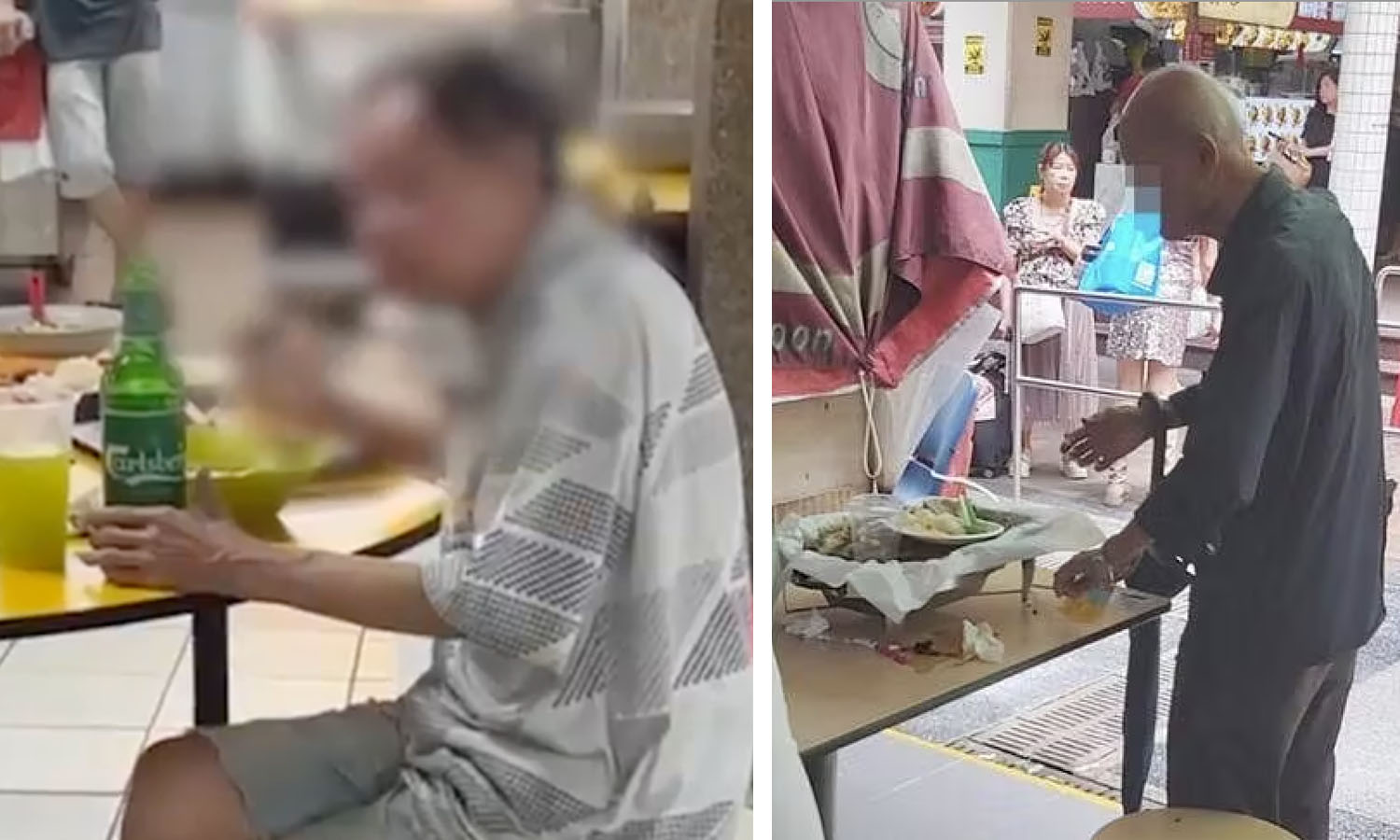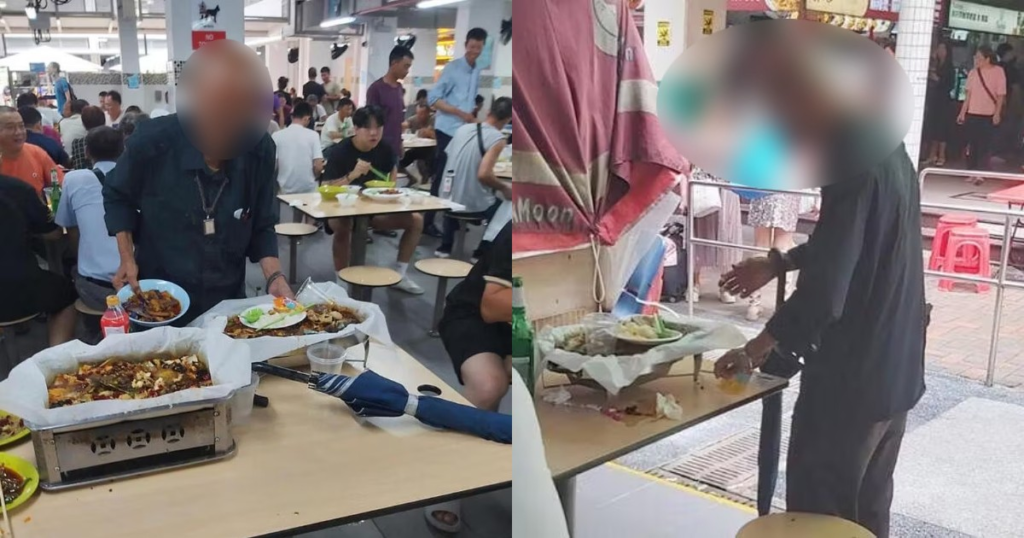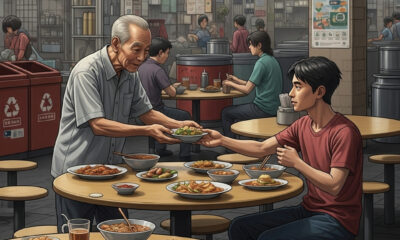Food
Chinatown Hawker Leftovers Consumption: Waste or Resource?

- Share
- Tweet /home/u433845138/domains/newsmm.co.uk/public_html/wp-content/plugins/mvp-social-buttons/mvp-social-buttons.php on line 71
https://newsmm.co.uk/wp-content/uploads/2025/05/nobody-podcast-production-studio-with-professional-microphone-headphones-streaming-interview-internet-radio-empty-desk-with-streaming-equipment-broadcast-live-show-social-media-2-1000x600.jpg&description=Chinatown Hawker Leftovers Consumption: Waste or Resource?', 'pinterestShare', 'width=750,height=350'); return false;" title="Pin This Post">
In the heart of Singapore’s bustling Chinatown, hawker centres are more than just food courts they’re cultural landmarks where culinary traditions thrive. Yet, amidst the sizzle of woks and the aroma of spices, a pressing issue simmers: food waste. Every day, perfectly edible meals are discarded, highlighting a paradox in a society that values both food and sustainability.
The Scope of the Problem
Singapore’s hawker centres, including those in Chinatown, contribute significantly to the nation’s food waste. According to reports, hawker centres and food courts in Singapore generate thousands of tons of food waste annually. This waste not only represents a loss of resources but also contributes to environmental concerns, such as increased greenhouse gas emissions from decomposing food in landfills.
A Controversial Practice: Eating Leftovers

In recent times, instances have emerged of individuals consuming leftovers left behind by other patrons at hawker centres. Notably, an 84-year-old man named Mr. Wang was observed eating unfinished meals at People’s Park Food Centre. When questioned, he explained that his actions were motivated not by financial necessity but by a desire to prevent food from going to waste. “Some people order a lot of food but cannot finish it. I’ve seen more than half of a whole fish left. I thought it was a waste, so I ate it. The food was still warm,” he stated.
While such actions stem from a commendable intent to reduce waste, they raise concerns about hygiene and public health. Consuming food left by others can pose risks, including exposure to contaminants or pathogens. Moreover, this practice may not be a scalable or sustainable solution to the broader issue of food waste.
Organized Efforts to Reduce Food Waste
Recognizing the magnitude of the problem, various initiatives have been launched to address food waste in Chinatown’s hawker centres.
Food Redistribution Programs
Organizations like The Food Bank Singapore collaborate with hawkers to collect unsold yet safe-to-eat food, redistributing it to those in need, including low-income families and migrant workers . Such programs not only reduce waste but also support vulnerable communities.
The Chinatown Hawker Leftovers Program
A notable initiative is the Chinatown Hawker Leftovers program, which encourages vendors to donate unsold food to centralized collection points. From there, the food is stored appropriately and distributed to beneficiaries through community organizations and volunteers . This program exemplifies how structured efforts can effectively tackle food waste while fostering community engagement.
Environmental and Economic Impacts
Reducing food waste has significant environmental benefits. Food decomposing in landfills produces methane, a potent greenhouse gas. By diverting edible food from landfills, these initiatives help mitigate climate change.

Economically, hawker stalls operate on thin margins, and unsold food represents a direct loss. Programs that facilitate the sale of surplus food at discounted rates or its donation can help vendors recover some costs and reduce overall waste .
Cultural Perspectives and Public Awareness
Singapore’s hawker culture is deeply ingrained in its national identity. Efforts to reduce food waste must therefore be sensitive to cultural practices and public perceptions. Educational campaigns that promote mindful consumption and the value of food can shift public attitudes. Encouraging patrons to order appropriate portions and take away leftovers can also contribute to waste reduction.
Conclusion
The issue of food waste in Chinatown’s hawker centres is multifaceted, intertwining environmental, economic, and cultural threads. While individual actions, like those of Mr. Wang, highlight a personal commitment to reducing waste, systemic solutions are necessary for broader impact. Through organized programs, community engagement, and public education, Singapore can continue to honor its rich culinary heritage while embracing sustainable practices.
Frequently Asked Questions
1. Why is leftover consumption at Chinatown hawker centres becoming a public topic?
Leftover consumption gained attention after individuals, particularly elderly patrons, were seen eating food left behind by others. This sparked discussions about food waste, hygiene, and whether such behavior stems from poverty or environmental concerns.
2. Is it legal to eat other people’s leftovers at hawker centres in Singapore?
While not illegal, eating leftovers left by others is discouraged due to health and safety concerns. Authorities and food safety advocates warn that such practices may expose individuals to foodborne illnesses.
3. Are there organized efforts to reduce food waste in Chinatown hawker centres?
Yes, initiatives such as The Food Bank Singapore and the Chinatown Hawker Leftovers Program work with vendors to collect unsold but edible food and redistribute it to communities in need.
4. How much food waste do Singaporean hawker centres generate annually?
Singapore generates approximately 800,000 tons of food waste per year, a significant portion of which comes from food courts, hawker centres, and restaurants. Chinatown hawker centres are part of this ecosystem.
5. Can hawker stall owners legally donate unsold food?
Yes, hawkers can donate unsold food under guidelines set by local authorities. Partnering with food rescue organizations ensures safe storage and distribution to avoid health risks.
6. What are the environmental benefits of reducing food waste in hawker centres?
Reducing food waste lowers the amount of organic material sent to landfills, which in turn reduces methane emissions a powerful greenhouse gas. It also conserves resources used in food production.
7. How can the public help reduce food waste at Chinatown hawker centres?
Diners can help by ordering only what they can finish, taking leftovers home, and supporting food rescue initiatives. Spreading awareness and encouraging vendors to participate in food redistribution programs also make a difference.
Click for more amazing info. News MM

-

 Celebrity8 months ago
Celebrity8 months agoIndia Rose Brittenham: All You Need to Know About Heather Thomas’ Daughter
-

 Celebrity8 months ago
Celebrity8 months agoMargot Rooker: All You Need to Know About Michael Rooker’s Wife
-

 Celebrity8 months ago
Celebrity8 months agoNadia Farmiga? All You Need to Know About Taissa Farmiga’s Sister
-

 Celebrity8 months ago
Celebrity8 months agoRobert Noah? All You Need to Know About Trevor Noah’s Father
-

 Celebrity8 months ago
Celebrity8 months agoJackie Witte? All You Need to Know About Paul Newman’s First Wife
-

 Celebrity8 months ago
Celebrity8 months agoCheryl Pistono? All You Need to Know About Kareem Abdul-Jabbar’s Ex-Girlfriend
-

 Celebrity8 months ago
Celebrity8 months agoAbigail S. Koppel? All You Need to Know About Leslie Wexner’s Wife
-

 Celebrity7 months ago
Celebrity7 months agoWho is the Father of Jay-Z? Biography of Adnis Reeves














